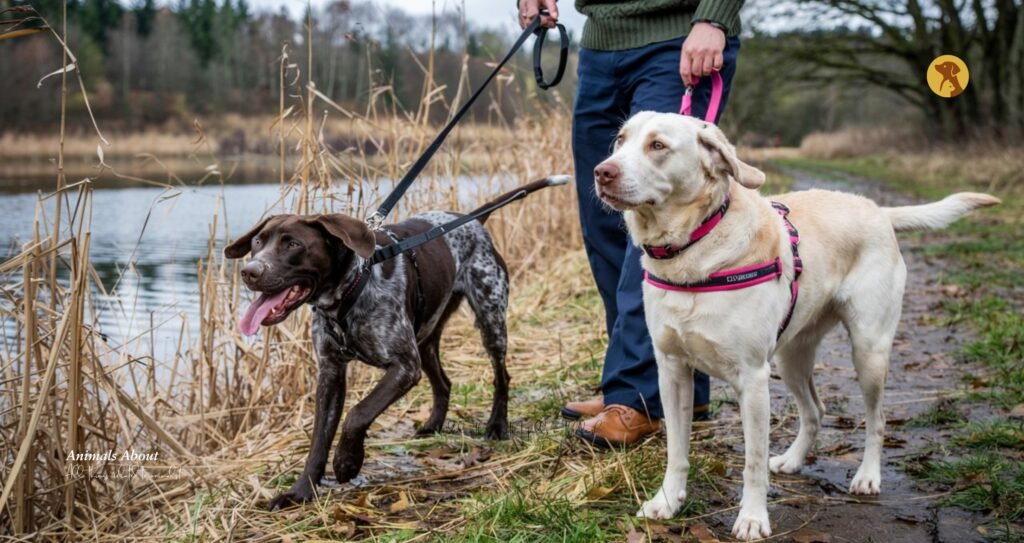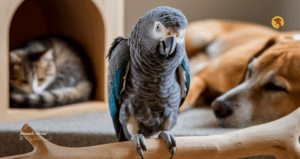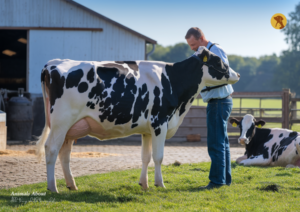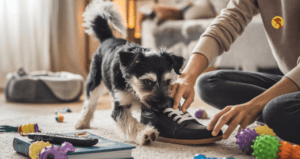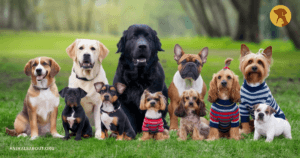Are daily walks turning into a stressful tug-of-war? Does your Dog Pulling Leash on the leash the moment you step outside? You’re not alone. “Dog pulling leash” is one of pet parents’ most common struggles. But don’t worry—whether your dog is strong, stubborn, or simply overexcited, there are effective and humane ways to regain control and enjoy your walks again.
Using tools, commands, and proper training techniques, let’s explore powerful, positive, and practical methods to correct your Dog Pulling Leash behavior. With consistency and the right knowledge, even the most leash-reactive dog can learn to walk calmly by your side.
Why Does Your Dog Pull on the Leash?
Walking a dog that pulls can be exhausting. But have you ever wondered why your dog behaves this way?
Dogs pull because they’re excited, curious, and often unaware that they’re doing something wrong. The world is full of exciting smells, sights, and sounds. Without proper leash manners, they assume pulling is how they get where they want to go—faster.
Some dogs also pull because they haven’t been taught loose leash walking tips. Others do it out of frustration or leash reactivity, especially when seeing other dogs. Whatever the reason, it’s important to address the behavior early and effectively. For example, certain energetic breeds like Labradors often display leash-pulling behavior when not properly trained. Learn more about their typical traits and how to handle them in our article on Labrador Retriever puppies’ behavior.
How to Stop Leash Pulling: Immediate Actions You Can Take
To stop leash pulling, you must stop reinforcing the behavior. The moment your dog starts to pull—stop walking. Stand still and wait. Only move forward once the leash slackens. This teaches your dog that pulling halts progress, while walking nicely earns rewards.
Use positive reinforcement leash training to reward good behavior. Bring high-value treats and praise your dog when they walk beside you. Stay calm and patient. Training doesn’t have to be perfect—it just needs to be consistent.
Pro Tip: If your dog is pulling like a sled dog, switch to a dog harness for pullers. It reduces pressure on your dog’s neck and gives you more control.
Leash Training a Dog: Step-by-Step for Lasting Results
If you’re wondering how to train a dog to walk calmly, follow this simple, effective structure:
- Start indoors or in your yard to minimize distractions.
- Use the best leash for strong dogs—something sturdy and comfortable.
- Begin by encouraging your dog to stay by your side using treats and praise.
- Reward every few steps when the leash is loose.
- Gradually increase distractions and practice in different environments.
This method works for dogs of all ages, but the sooner you start dog walk obedience training, the easier it becomes.
Dog Walking Behavior: Replace Chaos with Calm
Dogs don’t naturally understand how to behave on a leash. It’s your job to teach them proper dog walking behavior using clear guidance and repetition.
Command training, like “heel” or “let’s go,” helps your dog focus on you during walks. Teaching your dog to heel might seem like a challenge, but it’s a powerful way to promote calm walking behavior. Use a treat near your knee to guide your dog, and say “heel” when they match your pace.
Reward generously at first. Over time, your dog will associate walking by your side with good things.
Tools and Solutions to Stop Pulling on Walks
Sometimes training alone isn’t enough. The right tools can make a huge difference in your journey. Here are a few proven leash pulling solutions:
- Front-clip harnesses: Redirect your dog’s momentum and reduce pulling power.
- No-pull leashes: Designed to discourage tugging.
- Clickers: Reinforce calm leash behavior instantly.
- Treat pouches: Essential for rewarding on the go.
A strong dog needs the best leash for strong dogs that’s built to last. Choose one that offers grip, control, and comfort.
Teaching Dog to Heel and Walk Nicely
Many pet owners overlook the importance of structured walking. But when your dog learns to walk calmly, every walk becomes more enjoyable—for both of you.
If your dog rushes ahead or darts from side to side, it’s time to teach them to heel. Use treats and short verbal cues. Keep the leash loose. Celebrate every calm step forward. Walking isn’t a race—it’s an opportunity to bond, train, and explore.
Proper dog training for walking sets your dog up for a lifetime of safe, peaceful walks.
Prevent Pulling on Walks Before It Starts
Prevention is easier than correction. If you’re raising a puppy, now is the perfect time to start leash training. But even older dogs can learn new tricks.
Introduce loose leash walking tips as early as possible. Practice every day, even for just 10 minutes. Be patient, be kind, and stay positive. The more your dog succeeds, the more confident they’ll feel on the leash.
Consistency beats intensity. Training a little each day is better than once a week for an hour.
Leash-Reactive Dog Tips for Challenging Situations
If your dog lunges or barks at others during walks, you’re dealing with a leash-reactive dog. This type of behavior needs extra care. Avoid crowded areas during training. Walk during quiet times. Keep your dog focused on you with treats or toys.
Reward calm behavior and distance your dog from triggers until they learn to stay composed.
You can also work with a professional trainer for tailored dog behavior correction strategies if needed.
Regain Control and Confidence on Walks
Your dog doesn’t mean to make walks stressful. They just haven’t learned the rules yet. With the right techniques, tools, and mindset, you can transform walks from chaotic to calm.
Whether you’re dealing with a high-energy pup or a leash-reactive adult, following these tips will help your dog become a polite walking partner. Embrace dog walk obedience training, use tools to stop Dog Pulling Leash, and enjoy your peaceful strolls again.
FAQ
To stop unwanted chewing, provide plenty of chew toys, exercise, and mental stimulation. Make sure your dog isn’t chewing out of boredom, anxiety, or teething. Positive reinforcement training and redirection also help break the habit.
Aggression in dogs can stem from fear, dominance, lack of socialization, or medical issues. Identify the cause and work with a professional dog trainer or behaviorist. Avoid punishment, and use reward-based training instead.
Generally, dogs should be bathed every 4–6 weeks, but this depends on breed, coat type, lifestyle, and skin conditions. Overbathing can strip natural oils, so tailor the schedule to your dog’s needs.
A balanced diet includes high-quality protein, healthy fats, fiber, vitamins, and minerals. Consider your dog’s age, size, breed, and activity level. Consult your vet for specific dietary recommendations.
Disclaimer: The content on animalsabout.org is for informational purposes only. Always consult a professional dog trainer for specific behavioral concerns.

